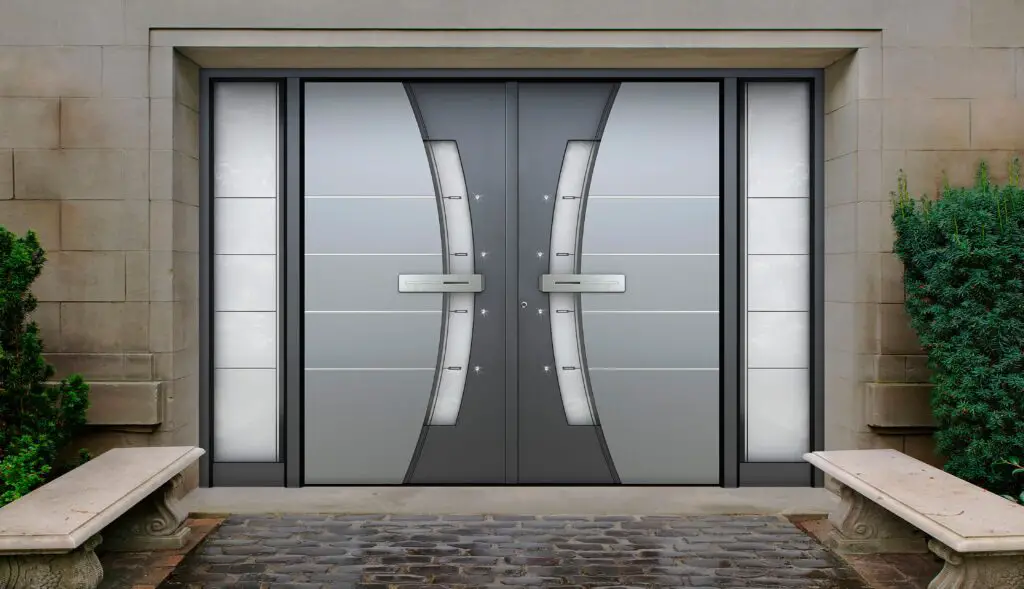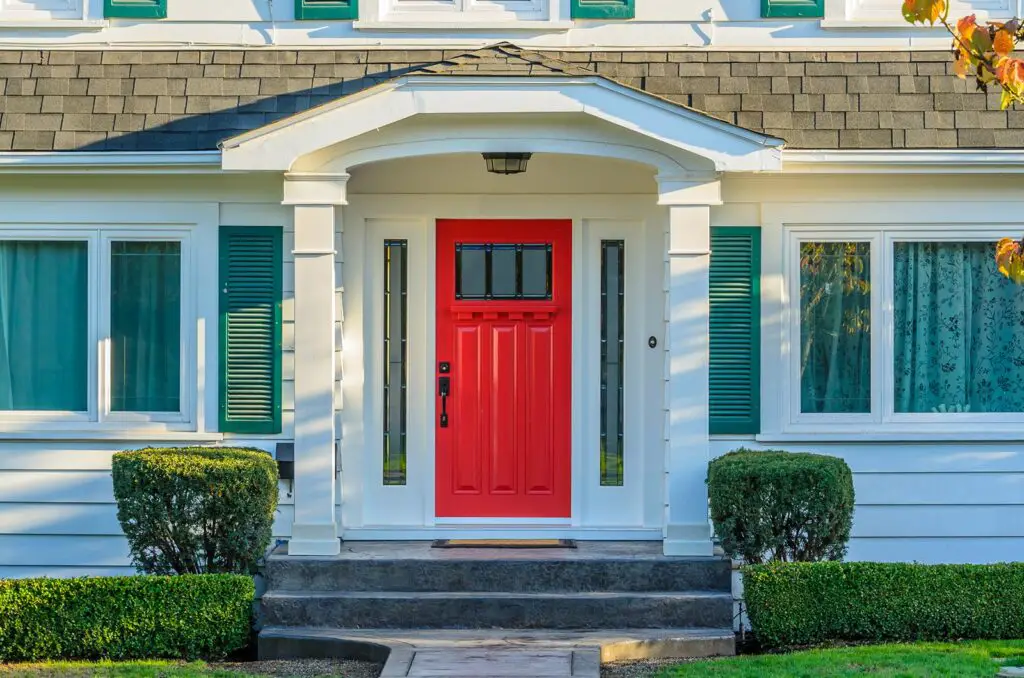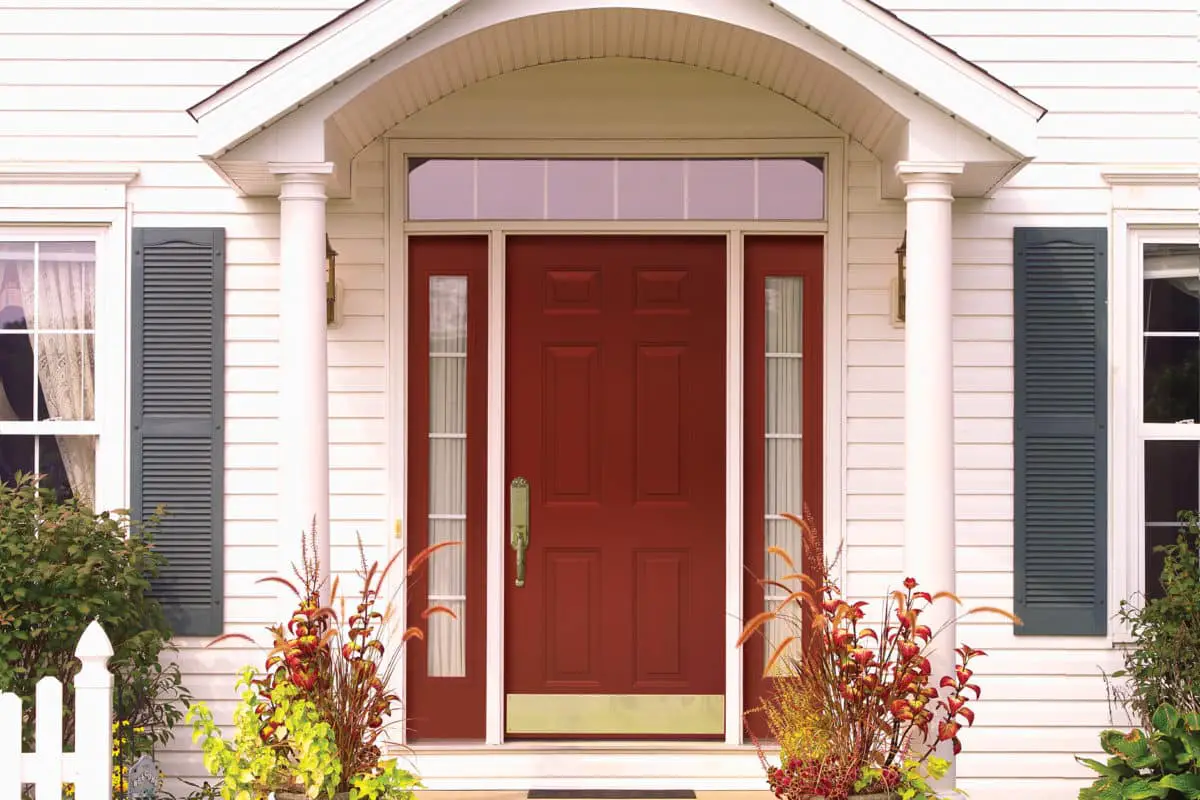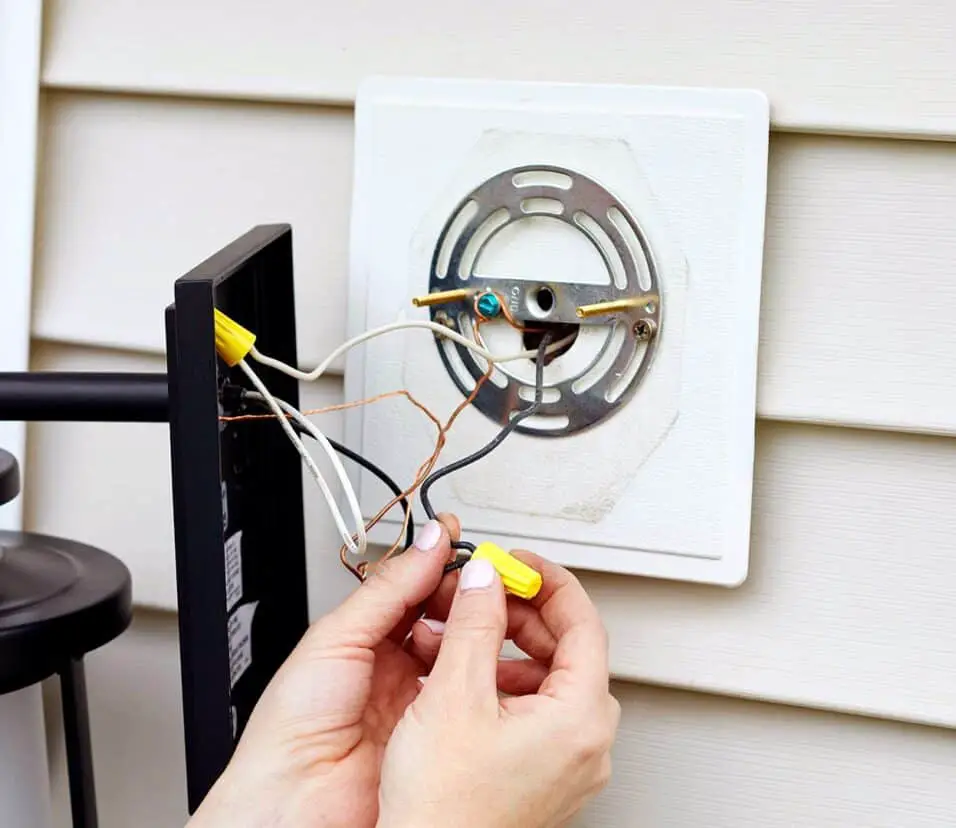How To Paint A Metal Door Exterior
Introduction
How To Paint A Metal Door Exterior: Painting a metal door exterior can be a great way to enhance the curb appeal of your home. Whether you want to freshen up the look of your front door or give your garage door a new lease on life, a fresh coat of paint can make a world of difference. However, painting a metal door requires some specific techniques and considerations to ensure a long-lasting and professional-looking finish.
Secondly, choosing the right type of paint is essential for a successful metal door painting project. Look for a high-quality exterior paint that is specifically formulated for metal surfaces. These paints are designed to withstand the elements and provide a durable finish. Additionally, consider the color of the paint and how it will complement the overall aesthetic of your home. Neutral colors like white, black, or gray are timeless choices, but don’t be afraid to experiment with bolder hues if it suits your personal style.
Lastly, the application technique is crucial for achieving a smooth and professional-looking finish. Start by applying a thin and even coat of paint using a brush or roller. Work in small sections, and be sure to smooth out any drips or brush marks as you go. Allow the first coat to dry completely before applying a second coat for optimal coverage and durability. Finally, don’t forget to properly clean and store your painting tools to ensure their longevity.

What kind of paint do you use on a metal exterior door?
The Best Paint For Steel Door Projects
Water-based acrylic paints (also known as latex paints) and oil-based paints (also called solvent-based paints), as well as the majority of high-quality paints, should perform well on metal with the proper application technique.
When it comes to painting a metal exterior door, it is important to choose the right type of paint that will adhere well to the surface and provide long-lasting protection. Metal doors are exposed to various weather conditions, including rain, sun, and temperature fluctuations, so it is crucial to use a paint that can withstand these elements.
One of the best types of paint to use on a metal exterior door is an oil-based paint. Oil-based paints are known for their durability and ability to adhere well to metal surfaces. They provide a smooth and even finish, and they are resistant to chipping, cracking, and peeling. Additionally, oil-based paints offer excellent protection against rust and corrosion, which is especially important for metal doors that are constantly exposed to moisture.
Another option for painting a metal exterior door is using a latex paint.
Latex paints are water-based and offer several advantages over oil-based paints. They dry quickly, have low levels of volatile organic compounds (VOCs), and are easier to clean up with soap and water. However, it is important to note that latex paints may not provide the same level of durability and protection as oil-based paints, especially in harsh weather conditions.
Before applying any paint to a metal exterior door, it is essential to properly prepare the surface. This includes cleaning the door to remove any dirt, grease, or rust, and sanding it to create a smooth and even surface for the paint to adhere to. It is also recommended to use a primer before painting, as it helps the paint bond to the metal and provides additional protection.
When painting a metal exterior door, it is recommended to use an oil-based paint for its durability and resistance to weather conditions. However, latex paints can also be used, especially if quick drying time and easy cleanup are important factors. Regardless of the type of paint chosen, proper surface preparation is crucial for achieving a long-lasting and professional-looking finish.
How do you paint an exterior metal door without removing it?
How to Paint a Front Door Without Removing It
1: Remove the door handle, locks and other hardware.
2: Sand the Door.
2 : Clean the Door.
4: Tape off the hinges and windows.
5: Paint one coat of primer.
6: Paint 2 coats of exterior paint.
7: Reinstall the door handle and locks.
Painting an exterior metal door without removing it is difficult, but with the correct methods and materials, it is feasible. You can use a few measures to give your door a professional look or protect it from the elements.
Firstly, you need to prepare the door surface before painting.
This involves cleaning the door thoroughly to remove any dirt, dust, or grease. Use a fine-grit sandpaper and sand in the direction of the grain to avoid scratching the metal.
Secondly, you need to protect the surrounding areas from paint splatters.
Next, you should apply a primer to the door. A primer helps the paint adhere better to the metal surface and provides a smooth base for the paint. Choose a primer that is specifically designed for metal surfaces and apply it evenly using a paintbrush or roller. Allow the primer to dry completely before moving on to the next step.
Once the primer is dry, you can start painting the door. Choose a high-quality exterior paint that is suitable for metal surfaces. Apply the paint in thin, even coats, using a paintbrush or roller. Start from the top of the door and work your way down, making sure to smooth out any drips or brush marks as you go. Allow each coat to dry completely before applying the next one.
How do you paint a metal door that is already painted?
You’ll have to sand a metal door before painting. Doors that have been previously painted may have peeling or cracked paint. Scrape or sand away this paint, but do so carefully to avoid scratching the metal. Do not sand factory-primed doors.
Firstly, you need to prepare the surface of the metal door. Start by cleaning the door thoroughly to remove any dirt, dust, or grease. Use a mild detergent and water solution to wash the door, and then rinse it off with clean water. Allow the door to dry completely before proceeding to the next step.
Next, you need to remove any loose or flaking paint from the door. Use a scraper or sandpaper to gently scrape away the old paint. Be careful not to damage the metal surface underneath. Once you have removed the loose paint, sand the entire door to create a smooth surface for the new paint to adhere to. Use a medium-grit sandpaper and sand in the direction of the grain.
After preparing the surface
It is important to apply a primer to the metal door. A primer helps the paint adhere better and provides a more even finish. Choose a primer that is specifically designed for metal surfaces. Apply the primer using a brush or roller, following the manufacturer’s instructions. Allow the primer to dry completely before moving on to the next step.
Once the primer is dry, you can start painting the metal door. Choose a high-quality paint that is suitable for metal surfaces. Apply the paint using a brush or roller, again following the manufacturer’s instructions. Start with the edges and corners, and then move on to the larger areas. Apply thin, even coats of paint, allowing each coat to dry before applying the next one. This will help prevent drips and ensure a smooth finish.
Do I need to prime a metal door before repainting?
Primer: Many new exterior doors come pre-primed. If so, you’ll be able to apply the paint directly to the door. Bare metal door: If the surface is bare metal or has any bare sections, you will need to apply metal primer to the door before painting.
Yes, it is important to prime a metal door before repainting it. Priming helps to ensure that the new paint adheres properly to the surface of the door and provides a smooth and long-lasting finish. Without priming, the paint may not adhere well to the metal surface, leading to peeling, cracking, or chipping over time.
Priming is especially important for metal doors because they are often exposed to harsh weather conditions, which can cause the paint to deteriorate more quickly. The primer acts as a protective barrier between the metal and the paint, preventing moisture and other elements from seeping into the door and causing damage.
When choosing a primer for a metal door
It is important to select one that is specifically designed for use on metal surfaces. These primers are formulated to provide excellent adhesion to metal and to resist rust and corrosion. They also typically dry quickly, allowing you to proceed with the painting process sooner.
Before priming the metal door, it is important to properly prepare the surface. This involves cleaning the door to remove any dirt, grease, or rust that may be present. You can use a mild detergent and water solution to clean the door, followed by a thorough rinse and drying. If there is any rust on the door, it should be removed using a wire brush or sandpaper before priming.
Once the door is clean and dry, you can apply the primer using a brush or roller. It is important to follow the manufacturer’s instructions for the specific primer you are using, including any recommended drying times between coats. After the primer has dried, you can proceed with applying the paint to the metal door.
What’s the best paint for metal doors?
In general, a latex-based or oil-based paint can work well in the interior, but for an exterior metal door, oil-based paint is a way to go. It is better suited to withstand the elements and provide a durable, long-lasting finish.
When it comes to painting metal doors, it’s important to choose the right type of paint that will provide durability and a long-lasting finish. Metal doors are exposed to various weather conditions and can be prone to rust and corrosion if not properly protected. Therefore, selecting the best paint for metal doors is crucial to ensure their longevity and aesthetic appeal.
One of the top choices for painting metal doors is an oil-based paint. Oil-based paints are known for their excellent adhesion and durability, making them ideal for metal surfaces. They provide a smooth and glossy finish that can withstand harsh weather conditions and resist chipping and peeling. Additionally, oil-based paints offer good rust protection, which is essential for metal doors that are constantly exposed to moisture.
Another popular option for painting metal doors is a latex-based paint.
Latex-based paints are water-based and offer several advantages over oil-based paints. They have a lower odor and are easier to clean up with soap and water. Latex-based paints also dry faster and have less of a tendency to yellow over time. However, they may not provide the same level of durability and rust protection as oil-based paints, especially in areas with high humidity or extreme weather conditions.
If you’re looking for a more eco-friendly option, consider using a water-based enamel paint. Water-based enamel paints are low in VOCs (volatile organic compounds) and have less odor compared to oil-based paints. They provide a durable and glossy finish that is resistant to fading, cracking, and peeling. Water-based enamel paints are also easy to clean up and dry quickly. However, they may not offer the same level of rust protection as oil-based paints, so it’s important to assess the specific needs of your metal door before making a decision.
Ultimately, the best paint for your metal door will depend on your specific requirements and preferences. Consider factors such as the climate in your area, the level of rust protection needed, and the desired finish. It’s also important to properly prepare the metal surface before painting by cleaning and priming it to ensure optimal adhesion and longevity of the paint. Consulting with a professional or seeking advice from a paint specialist can also help you make an informed decision and achieve the best results for your metal door.
Preparing a metal door for exterior painting is crucial to ensure a long-lasting and professional-looking finish.
Here are the necessary steps to follow:
Clean the surface: Start by thoroughly cleaning the metal door to remove any dirt, dust, or grease. Use a mild detergent and water solution, and scrub the surface with a soft brush or sponge. Rinse the door with clean water and allow it to dry completely.
Remove old paint: If there is any old paint or loose flakes on the door, it is important to remove them. Use a paint scraper or wire brush to scrape off the old paint. Sand the surface lightly to create a smooth and even base for the new paint.
Repair any damages: Inspect the door for any dents, scratches, or rust spots. Use a suitable filler or putty to repair these damages. Sand the repaired areas to ensure a seamless finish.
Prime the surface: Applying a primer is essential to promote adhesion and prevent rust. Choose a primer specifically designed for metal surfaces. Apply the primer evenly using a brush or roller, following the manufacturer’s instructions. Allow the primer to dry completely before proceeding to the next step.
Apply the paint: Finally, it’s time to apply the paint. Select a high-quality exterior paint that is specifically formulated for metal surfaces. Use a brush or roller to apply the paint in thin and even coats. Allow each coat to dry before applying the next one. Follow the manufacturer’s instructions regarding drying times and the number of coats required.
By following these necessary steps, you can ensure that your metal door is properly prepared for exterior painting, resulting in a beautiful and durable finish.
What type of paint is recommended for painting a metal door on the exterior?
When it comes to painting a metal door on the exterior, it is important to choose the right type of paint that can withstand the elements and provide long-lasting protection. The recommended paint for this purpose is exterior acrylic latex paint. This type of paint is specifically formulated to adhere well to metal surfaces and is resistant to fading, cracking, and peeling.
Exterior acrylic latex paint offers several advantages for painting a metal door. Firstly, it provides excellent coverage and can easily hide any imperfections on the surface of the door. Secondly, it dries quickly, allowing you to apply multiple coats in a shorter amount of time. Additionally, this type of paint is available in a wide range of colors, allowing you to choose the perfect shade to complement your home’s exterior.
Are there any specific tools or materials required for painting a metal door exterior?
When it comes to painting a metal door on the exterior, there are a few specific tools and materials that you will need to ensure a successful and long-lasting finish. Firstly, you will need a good quality paintbrush or roller that is suitable for use with metal surfaces. It is important to choose a brush or roller that is designed for use with oil-based or latex paint, depending on the type of paint you will be using.
In addition to a paintbrush or roller, you will also need a primer specifically formulated for metal surfaces. This primer will help to create a smooth and even base for the paint to adhere to, ensuring better adhesion and durability. It is important to choose a primer that is compatible with the type of paint you will be using, whether it is oil-based or latex.
How long does it typically take for the paint to dry on a metal door exterior?
When painting a metal door exterior, it is important to allow sufficient time for the paint to dry before handling or applying additional coats. The drying time can vary depending on several factors, including the type of paint used, the weather conditions, and the thickness of the paint application.
On average, it can take anywhere from 4 to 8 hours for the paint to dry completely on a metal door exterior. However, it is recommended to wait at least 24 hours before subjecting the painted surface to any heavy use or exposure to moisture. This will ensure that the paint has fully cured and hardened, providing a durable and long-lasting finish.
Check the manufacturer’s directions for drying times and recommendations as humid or cold temperatures may prolong drying. Multiple thin layers of paint instead of one thick coat can speed up drying and improve the painted metal door’s gloss.
Are there any additional maintenance or care instructions for a metal door after it has been painted on the exterior?
Yes, there are some additional maintenance and care instructions that you should follow after painting a metal door on the exterior. These steps will help ensure the longevity and durability of the paint job, as well as the overall condition of the door.
First, don’t touch or lean on the freshly painted door for 24 hours. This lets the paint dry and cure without interference, preventing smudges and smears.
Secondly, regular cleaning and maintenance of the painted metal door is essential to keep it looking its best. It is also important to rinse the door thoroughly with clean water after cleaning to remove any residue.

Conclusion
First and foremost, it is important to properly prepare the surface of the metal door before painting. This includes cleaning the door thoroughly to remove any dirt, dust, or grease. Additionally, any rust or peeling paint should be sanded down and treated with a rust inhibitor to prevent further damage.
Once the surface is properly prepared, it is time to apply a primer. A high-quality metal primer will help the paint adhere to the surface and provide an even base for the topcoat. It is important to choose a primer that is specifically designed for metal surfaces and follow the manufacturer’s instructions for application.
After the primer has dried, it is time to apply the topcoat. When choosing a paint for your metal door, it is important to select a high-quality exterior paint that is designed to withstand the elements. This will ensure that your door remains vibrant and protected for years to come.
Painting a metal exterior door is a relatively simple process that can greatly improve the appearance and durability of your home. By properly preparing the surface, applying a primer, and using a high-quality exterior paint, you can achieve professional-looking results that will last for years. So, whether you are looking to update the look of your home or simply protect your metal door from the elements, painting is a great option to consider.








